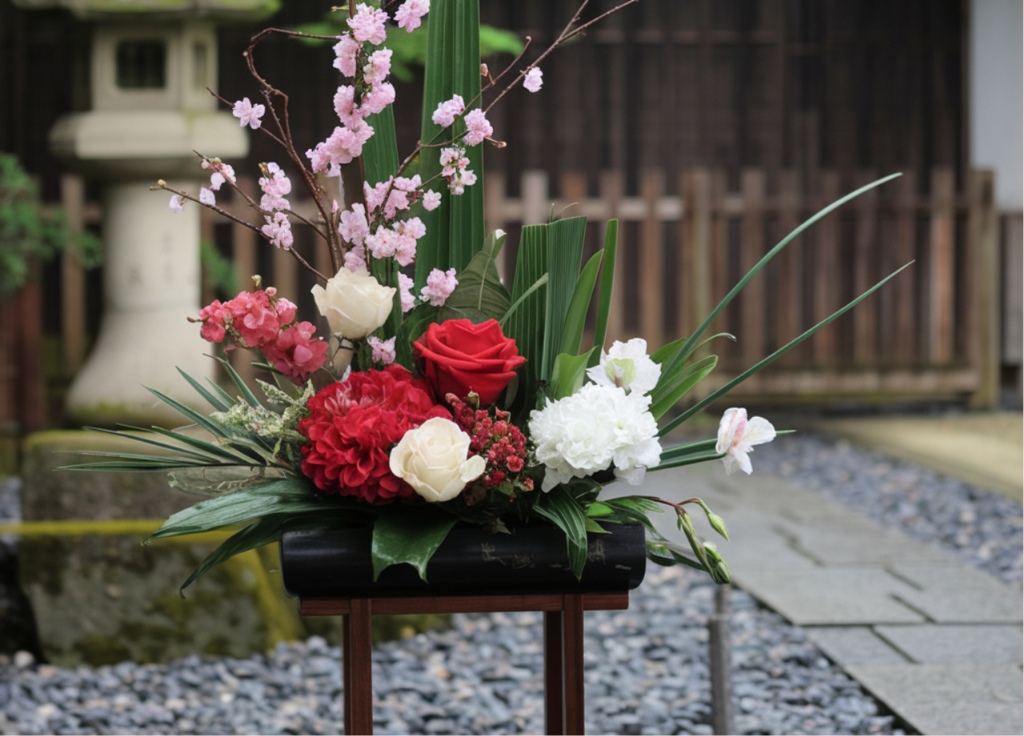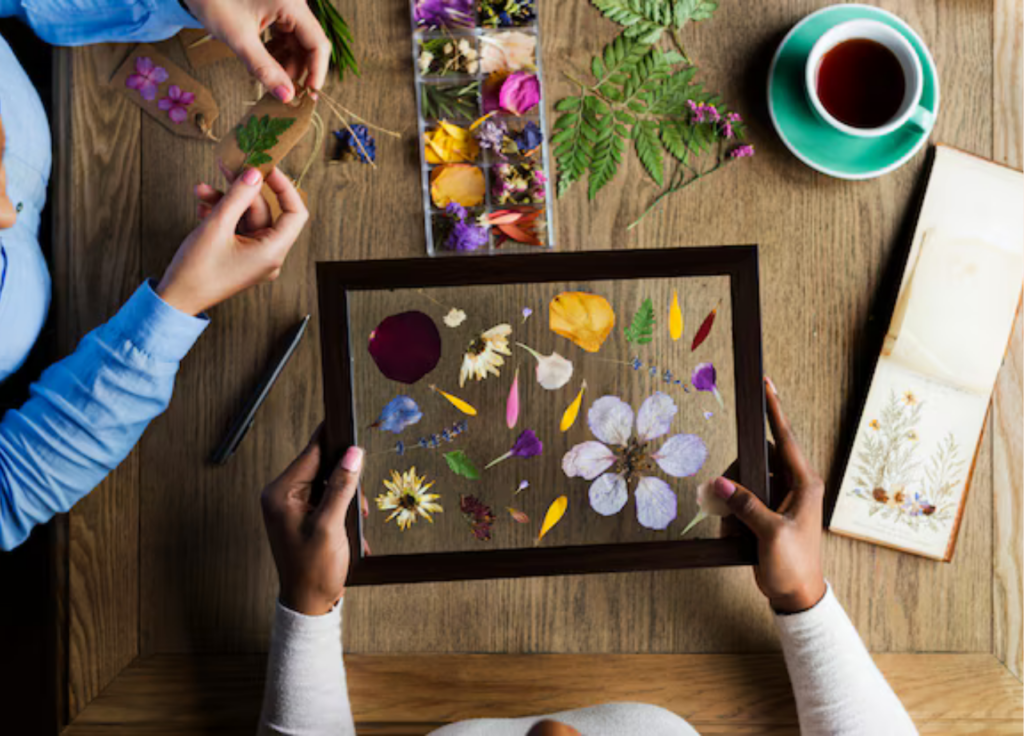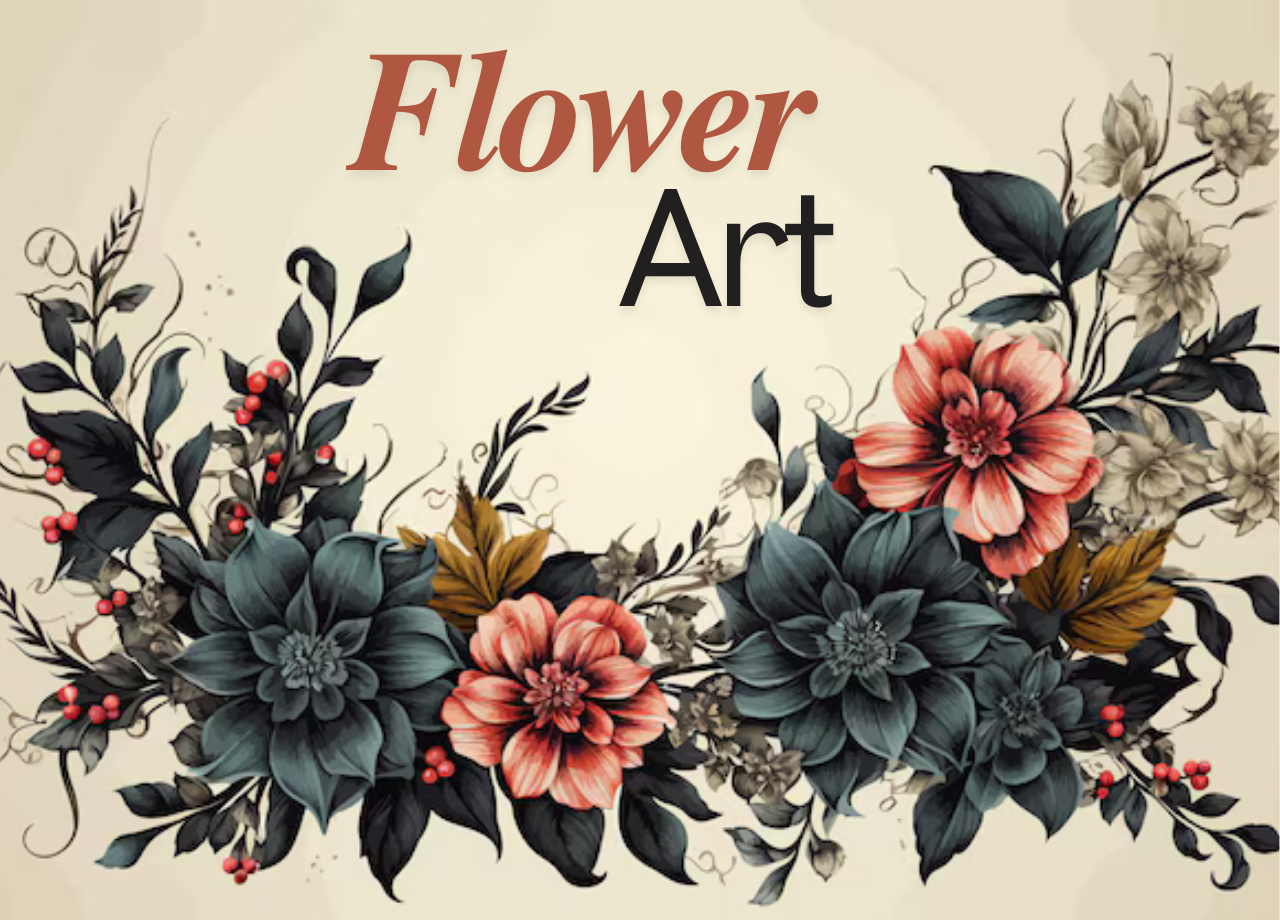Introduction
Flower art, a timeless and universal form of expression, has captivated human imagination for centuries. From delicate floral arrangements to intricate botanical illustrations, flower art showcases the beauty and diversity of nature through the lens of creativity. Whether you’re an aspiring artist, a seasoned florist, or simply someone who appreciates the aesthetics of flowers, this article will take you on a journey through the world of flower art. We’ll explore its various forms, techniques, historical significance, and how you can create your own stunning flower art pieces. By the end, you’ll have a comprehensive understanding of why flower art continues to bloom as a popular and cherished art form.
Table of Contents
The Evolution of Flower Art
Flower art has evolved significantly over time, reflecting cultural shifts, technological advancements, and changing aesthetic preferences. In ancient civilizations, flowers were often depicted in religious and ceremonial contexts, symbolizing purity, love, and reverence. For example, the Egyptians used flowers in their art and rituals, with the lotus flower being particularly significant. Similarly, in ancient Greece and Rome, floral motifs adorned pottery, mosaics, and frescoes, showcasing the admiration for nature’s beauty.
As we move through history, flower art became more refined and detailed, especially during the Renaissance period. Artists like Leonardo da Vinci and Albrecht Dürer produced exquisite botanical illustrations that not only served as scientific references but also as works of art. The Victorian era saw a surge in the popularity of flower art, particularly in the form of floral arrangements and pressed flowers, which were often used to convey emotions and messages in the language of flowers, or “floriography.”
In modern times, flower art has taken on new forms and techniques, from digital floral designs to large-scale installations in public spaces. The versatility of flower art allows it to adapt and thrive in various artistic mediums, ensuring its continued relevance in contemporary culture.
Types of Flower Art
Floral Arrangements Floral arrangements are perhaps the most widely recognized form of flower art. This involves the careful selection and placement of flowers in a visually pleasing manner. Whether it’s a simple bouquet or an elaborate centerpiece, the art of arranging flowers requires an understanding of color theory, balance, and harmony. Florists often use a variety of flowers, foliage, and accessories to create unique designs that cater to different occasions, such as weddings, funerals, and holidays.
Botanical Illustration Botanical illustration is a scientific art form that aims to depict flowers with precision and accuracy. Unlike floral arrangements, which prioritize aesthetics, botanical illustrations focus on capturing the intricate details of a flower’s structure. This type of flower art is often used in scientific publications, educational materials, and field guides. Despite its scientific nature, botanical illustration is also appreciated for its artistic beauty, with many artists dedicating their careers to mastering this craft.
Pressed Flower Art Pressed flower art involves preserving the natural beauty of flowers by pressing them between sheets of paper and allowing them to dry. Once flattened and dried, these flowers can be used to create various art pieces, such as greeting cards, bookmarks, and framed artwork. Pressed flower art is a delicate process that requires patience and precision, but the results can be breathtakingly beautiful.
Floral Painting and Drawing Floral painting and drawing are traditional forms of flower art that have been practiced for centuries. Artists use various mediums, such as watercolor, oil, and pencil, to capture the beauty of flowers on canvas or paper. Floral paintings can range from realistic depictions to abstract interpretations, each showcasing the artist’s unique style and perspective. Floral art in this form has found a place in both classical and contemporary art galleries, highlighting its enduring appeal.
Digital Flower Art In the digital age, flower art has expanded into the realm of digital design. Graphic designers and digital artists use software like Adobe Illustrator and Photoshop to create intricate floral patterns, illustrations, and designs. Digital flower art can be used in various applications, including branding, fashion, and home decor. The flexibility of digital tools allows artists to experiment with different styles, colors, and compositions, resulting in innovative and eye-catching floral art.
Floral Sculptures Floral sculptures are three-dimensional works of art that use flowers and other natural materials as the primary medium. These sculptures can range from small tabletop pieces to large installations in public spaces. Floral sculptures often require collaboration between artists, florists, and horticulturists to bring the vision to life. This type of flower art is particularly popular at events like flower shows and festivals. where the ephemeral beauty of the sculptures can be appreciated by a wide audience.

Techniques for Creating Flower Art
Creating flower art involves a combination of creativity, technical skill, and an understanding of the materials at hand. Here are some techniques commonly used in different types of flower art:
Color Theory and Composition Understanding color theory is essential for creating visually appealing flower art. Colors can evoke different emotions and set the tone for the artwork. For example, warm colors like red and yellow can create a sense of energy and warmth, while cool colors like blue and green can convey calmness and tranquility. In floral arrangements, complementary colors (colors opposite each other on the color wheel) can create a striking contrast, while analogous colors (colors next to each other on the color wheel) can create a harmonious blend.
Layering and Texturing In both floral arrangements and pressed flower art, layering and texturing are important techniques that add depth and dimension to the artwork. By layering different types of flowers, leaves, and other materials, artists can create a rich and dynamic composition. Texturing involves the use of various elements with different surfaces and finishes to add visual interest. For example, combining smooth petals with rough foliage can create a tactile contrast that enhances the overall design.
Preservation Methods Preservation is key in flower art, especially in pressed flower art and botanical illustration. Techniques like drying, pressing, and using silica gel can help maintain the color and structure of flowers over time. In botanical illustration, artists often work with freshly picked flowers to capture their details before they wilt. For floral arrangements, florists use techniques like water tubes, floral foam, and refrigeration to keep flowers fresh for as long as possible.
Digital Manipulation In digital flower art, artists use various tools and techniques to manipulate floral images and create unique designs. Techniques like layering, masking, and blending can be used to combine different floral elements into a cohesive composition. Digital artists can also experiment with effects like gradients, shadows, and textures to add depth and realism to their designs.
The Role of Flower Art in Culture and Society

Flower art has played a significant role in culture and society throughout history. In many cultures, flowers are associated with symbolism and meaning, often used to convey messages that words cannot express. For example, in the Victorian era, the language of flowers was used to communicate emotions and sentiments through floral arrangements. Different flowers had different meanings, and the way they were arranged could convey complex messages.
In contemporary society, flower art continues to be a powerful form of expression. It is used in a range of settings, from private occasions such as weddings and birthdays to public gatherings like festivals and commemorations. Flower art also has a therapeutic aspect, as the process of creating and appreciating floral art can have a calming and meditative effect. This is why activities like flower arranging and botanical illustration are often recommended as stress-relief practices.
The Environmental Impact of Flower Art
While flower art brings beauty and joy to many, it is important to consider its environmental impact. The cultivation, harvesting, and transportation of flowers can have significant ecological consequences. For example, the use of pesticides and fertilizers in flower farming can harm local ecosystems and contribute to pollution. The carbon footprint of transporting flowers across the globe is also a concern, especially when flowers are shipped from one country to another.
To minimize the environmental impact of flower art, many artists and florists are turning to sustainable practices. This includes using locally sourced and seasonal flowers, reducing the use of floral foam (which is non-biodegradable), and opting for organic and pesticide-free flowers. Additionally, some artists are exploring alternative materials, such as recycled paper and fabric, to create eco-friendly floral art.
How to Create Your Own Flower Art
Creating your own flower art can be a rewarding and fulfilling experience. Whether you’re a beginner or an experienced artist, here are some steps to get you started:

Choose Your Medium Decide on the type of flower art you want to create. Are you interested in floral arrangements, botanical illustration, or digital flower art? Each medium requires different tools and techniques, so it’s important to choose one that aligns with your skills and interests.
Gather Your Materials Once you’ve chosen your medium, gather the necessary materials. For floral arrangements, this may include fresh flowers, foliage, vases, and floral foam. For botanical illustration, you’ll need art supplies like pencils, watercolors, and paper. If you’re working with digital flower art, ensure you have access to graphic design software and a tablet or computer.
Learn the basics. If you’re new to flower art, take some time to learn the basics. There are many online tutorials, books, and workshops available that can teach you the fundamentals of floral design, botanical illustration, and digital art. Practice regularly to build your skills and gain confidence in your abilities.
Experiment with different styles. Flower art is a versatile and creative medium, so don’t be afraid to experiment with different styles and techniques. Try combining different types of flowers, playing with color schemes, and exploring new textures. The more you experiment, the more you’ll discover your unique style and voice as an artist.
Share Your Work Once you’ve created your flower art, share it with others! Whether it’s through social media, art exhibitions, or gifting your artwork to friends and family, sharing your creations can bring
You joy and inspire others to explore the world of flower art as well. Sharing your work also opens up opportunities for feedback, which can help you improve and grow as an artist.
Incorporating Flower Art into Your Home and Lifestyle
Flower art isn’t just limited to galleries and exhibitions—it can be a beautiful and meaningful addition to your home and daily life. Here are some ideas for incorporating flower art into your living space and routines:
Decorating with floral arrangements Fresh floral arrangements can instantly brighten up any room and create a welcoming atmosphere. Consider placing a bouquet on your dining table, a small arrangement on your bedside table, or a few sprigs of flowers on a windowsill. For a longer-lasting option, you can use dried flowers or silk flowers, which maintain their beauty for months or even years.
Displaying botanical prints Botanical illustrations and floral paintings make elegant wall art that can enhance the aesthetic of your home. Choose pieces that complement your existing decor, or create a gallery wall featuring a variety of floral prints. You can also frame pressed flowers to create a unique and personal piece of art.
Floral-Themed Home Accessories Incorporate flower art into your home with floral-themed accessories, such as cushions, curtains, and rugs. These items can add a touch of nature and beauty to your space, making it feel more cozy and inviting. Floral patterns can range from subtle and understated to bold and vibrant, so choose what best fits your style.
Flower Art in Fashion Floral patterns have long been a staple in fashion, and you can incorporate flower art into your wardrobe through clothing, accessories, and even jewelry. A floral dress, scarf, or handbag can add a fresh and feminine touch to your look. You can also find flower art in the form of embroidered patches or brooches, allowing you to customize your outfits with a personal touch.
DIY Flower Art Projects If you enjoy crafting, there are plenty of DIY flower art projects you can try. For example, you can create your own pressed flower bookmarks, floral wreaths, or painted flower pots. These projects are not only fun and creative, but they also make great gifts for friends and family.
FAQs about Flower Art
What is flower art? Flower art is a broad term that encompasses various artistic practices that involve flowers. This can include floral arrangements, botanical illustrations, pressed flower art, floral paintings, and more.
How do I start creating flower art? To start creating flower art, choose a specific medium that interests you, gather the necessary materials, and learn the basics through tutorials or classes. Practice regularly and experiment with different styles to develop your skills.
Can flower art be preserved? Yes, there are several methods for preserving flower art, such as pressing, drying, and using silicon gel. These methods help maintain the color and structure of flowers over time.
Is flower art environmentally friendly? Flower art can be environmentally friendly if sustainable practices are used. This includes using locally sourced flowers, reducing waste, and opting for organic and pesticide-free materials.
What are some popular styles in flower art? Popular styles in flower art include traditional floral arrangements, botanical illustrations, abstract floral paintings, and digital flower designs. Each style offers a unique way to explore and express the beauty of flowers.
Where can I display my flower art? Flower art can be displayed in various settings, such as your home, office, or public spaces. Floral arrangements can brighten up any room, while botanical prints and paintings make elegant wall art.
What is the significance of flowers in art? Flowers have long been symbols of beauty, love, and nature in art. They are often used to convey emotions, celebrate special occasions, and add a sense of harmony and tranquility to the artwork.
Conclusion
Flower art is a versatile and enduring form of creative expression that celebrates the beauty of nature. From the delicate petals of a fresh bouquet to the intricate details of a botanical illustration, flower art offers endless possibilities for artistic exploration. Whether you’re an experienced artist or just starting out, flower art allows you to connect with nature, express your creativity, and bring a touch of beauty into your life.
As you continue to explore the world of flower art, remember that it’s not just about the final product—it’s about the process and the joy of creating something beautiful. Whether you’re arranging flowers, painting them, or creating digital designs, each piece of flower art you create is a reflection of your unique perspective and artistic vision. So, pick up your tools, gather your flowers, and let your creativity blossom in the world of flower art.
You can see latest update on: Legwarmers



